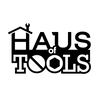Unfortunately, as good as a tool is made, it still is subject to wear and tear and occasionally they break or they need to be repaired to prevent breaking. Of course proper care and storage will be the best thing you can do to preserve your tools and prevent breaking. A pound of prevention, as the saying goes, is worth a pound of cure. Preventative maintenance on your tools is no exception, but even with PM, tools sometimes still fail. Here’s how to do preventative maintenance and repairs in the unlikely event that your Ochsenkopf axe is damaged.
 Just before winter you should prepare your axe for hibernation, and even during seasons of regular use, these steps will keep your axe in top shape. The first thing you want to do is keep your axe sharp at all times. This not only keeps the axe safe to use, but a sharp edge reduces the amount of imperfections that can trap water and dirt, a sharp edge reduces rust. A sharp axe also actually cuts the wood as opposed to a dull edge which essentially makes you push through the wood. Obviously cutting is easier. The Ochsenkopf sharpening stone will help you keep your edge sharp, and you can also see the Ochsenkopf stone in use here. It’s also a good idea to keep the axe head oiled to protect against rust. Most people seem to use linseed oil or beeswax. If you’ve found some rust has crept in, you can remove the axe head and give it a good soak in vinegar with a water rinse and an oil finish once it’s dry. The same techniques of preventative maintenance can work well here and although linseed oil is often preferred, other oils can work just as well.
Just before winter you should prepare your axe for hibernation, and even during seasons of regular use, these steps will keep your axe in top shape. The first thing you want to do is keep your axe sharp at all times. This not only keeps the axe safe to use, but a sharp edge reduces the amount of imperfections that can trap water and dirt, a sharp edge reduces rust. A sharp axe also actually cuts the wood as opposed to a dull edge which essentially makes you push through the wood. Obviously cutting is easier. The Ochsenkopf sharpening stone will help you keep your edge sharp, and you can also see the Ochsenkopf stone in use here. It’s also a good idea to keep the axe head oiled to protect against rust. Most people seem to use linseed oil or beeswax. If you’ve found some rust has crept in, you can remove the axe head and give it a good soak in vinegar with a water rinse and an oil finish once it’s dry. The same techniques of preventative maintenance can work well here and although linseed oil is often preferred, other oils can work just as well.
 Handles should receive similar care, mainly that they too need to be oiled periodically and stored in a cool to room temperature area. The oil soaks into the wood and “polymerizes” it allowing it to withstand the elements and it expands the wood, thus ensuring a tighter grip on the axe head. Here again linseed oil is used commonly, though some swear by other mixtures for better absorption. One mixture that’s said to have good results is eight parts boiled linseed oil, one part turpentine and one part pine tar. This mixture is said to be especially good for new handles (take note if you’re replacing a handle), but requires many coats. Caring for your handle and storing it in this manner will increase its lifespan, but as we all know, time always takes its toll and one day you may have to replace your axe handle.
Handles should receive similar care, mainly that they too need to be oiled periodically and stored in a cool to room temperature area. The oil soaks into the wood and “polymerizes” it allowing it to withstand the elements and it expands the wood, thus ensuring a tighter grip on the axe head. Here again linseed oil is used commonly, though some swear by other mixtures for better absorption. One mixture that’s said to have good results is eight parts boiled linseed oil, one part turpentine and one part pine tar. This mixture is said to be especially good for new handles (take note if you’re replacing a handle), but requires many coats. Caring for your handle and storing it in this manner will increase its lifespan, but as we all know, time always takes its toll and one day you may have to replace your axe handle.
Having to replace your Ochsenkopf handle (aka, re-helving) is probably not all that common, but when you need to, you need to. Every Ochsenkopf handle is guaranteed to be under a maximum moisture content upon delivery, so your handle should be dry enough ensuring readiness to use. You can treat the handle, then once it’s dry and ready, give re-helving a go. Ochsenkopf has a how-to guide that’s pretty easy to follow.
 Ochsenkopf first recommends that you remove the safety disc, make sure you use the correct tools. Next, they want you to identify where the break occurred and either saw or remove the head accordingly. The next steps have you connect the head to the handle, drive it in, insert the wedge, mark the hole, drive in the ring wedges, and finally affix the safety disc. Of course before using the axe, perform the final safety check, because the last thing you need is for the axe head to go flying off.
Ochsenkopf first recommends that you remove the safety disc, make sure you use the correct tools. Next, they want you to identify where the break occurred and either saw or remove the head accordingly. The next steps have you connect the head to the handle, drive it in, insert the wedge, mark the hole, drive in the ring wedges, and finally affix the safety disc. Of course before using the axe, perform the final safety check, because the last thing you need is for the axe head to go flying off.
With Ochsenkopf axes and proper care of said axes, it’s few and far between that you would need to replace the handle on your axe. Proper preventative maintenance will go a long way to making sure that you can work without mishap. Unfortunately, it’s an imperfect world, and you may need to replace your handle and this will get you started on that path. Once you’ve re-helved your axe, get in the habit of treating your axe right with periodic oiling and proper storage.







Leave a comment